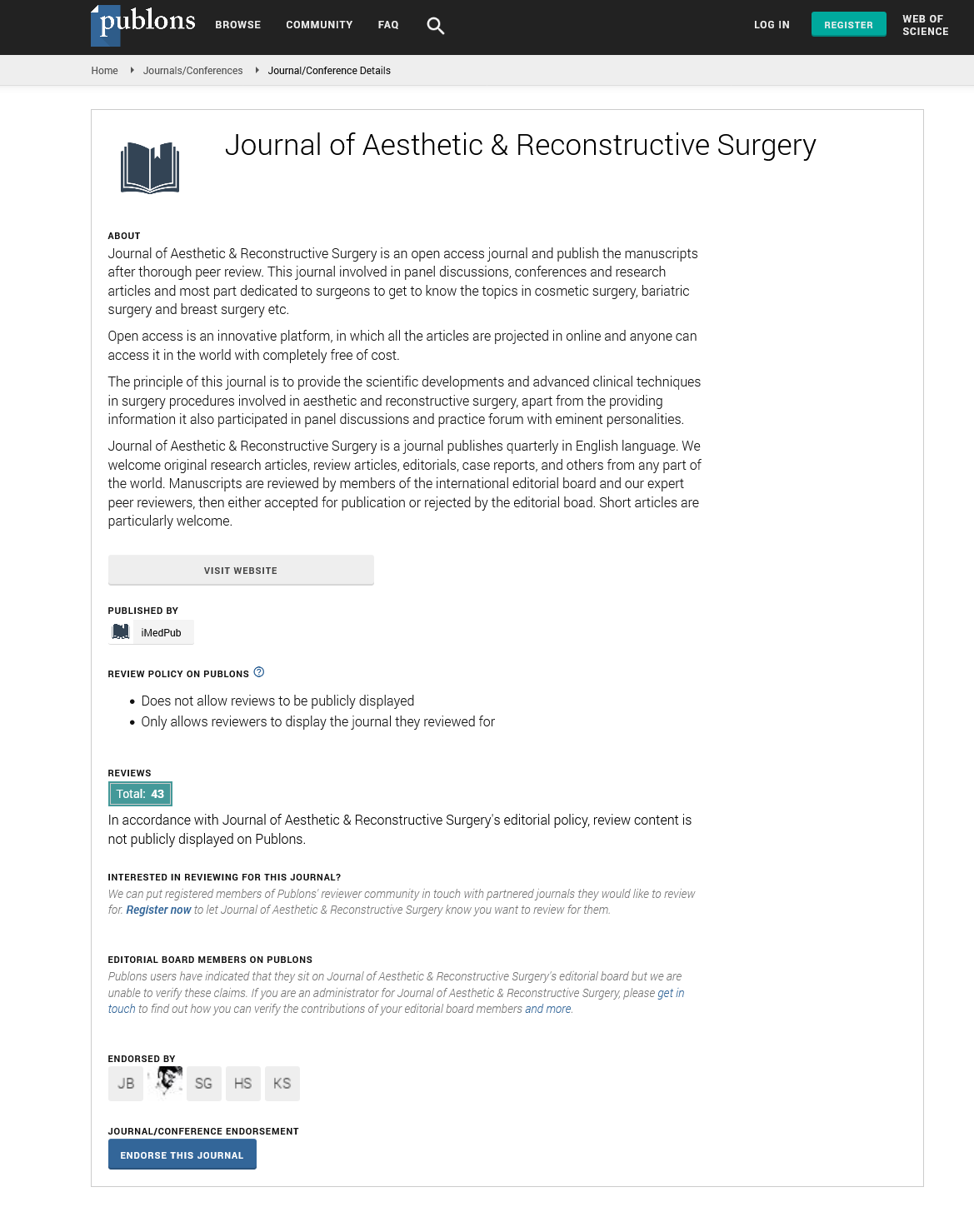ISSN : 2472-1905
Journal of Aesthetic & Reconstructive Surgery
Volumetric analysis of pharyngeal airway of 141 individuals who underwent orthognathic surgery
2nd International Conference on Plastic & Aesthetic Surgery
July 27-28, 2017 Vancouver, Canada
Eduardo Sanches Gonçales, Victor Tieghi Neto, Celso Palmieri Jr. and Ghali E Ghali
Universidade de Sao Paulo, Brazil LSU Health Sciences Center, USA
Posters & Accepted Abstracts: J Aesthet Reconstr Surg
Abstract
Introduction: Facial deformities (FD) may be defined as defects in the growth and development of the maxilla and mandible. It may affect the function or development of related systems. Orthognathic surgery is the procedure of choice for the treatment of FD and it may affect the pharyngeal airway.
Objective: The aim of this study was to retrospectively evaluate, the changes in the dimensions of the pharyngeal airway space after orthognathic surgery, using a volumetric analysis.
Materials & Methods: Pre and post-operative volumetric and area measurements were done by the use of cone beam computed tomography (CBCT) and Dolphin Imaging 11.7 of 141 individuals who underwent orthognathic surgery. The subjects were divided into 5 groups according to the type of surgery: Group 1: isolated bilateral sagittal split ramus osteotomy (31 individuals); Group 2: isolated intraoral vertical ramus osteotomy (6 individuals), Group 3: Le Fort I osteotomy associated with bilateral sagittal split ramus osteotomy (12 individuals); Group 4: isolated Le Fort I osteotomy (80 individuals); Group 5: Le Fort I osteotomy associated with intraoral vertical ramus osteotomy (12 individuals). The data were analyzed by the ANOVA Test.
Results: In mandibular advancement (Group 1), maxillo/mandibular advancement (Group 3) and maxillary advancement (Group 4), the area and volume of the pharyngeal airway showed statistically significant increase. Group 2 (mandibular setback by IVRO osteotomy) showed no statistically significant decrease in the area and volume of the pharyngeal airway and Group 5 showed no statistically significant increase in all parameters studied, except the nasopharynx which showed decrease not statistically significant.
Conclusion: The pharyngeal airway space after orthognathic surgery will change according to the direction of the movements performed in the jaws.
Biography
E-mail: eduardogoncales@gmail.com
Google Scholar citation report
Citations : 130
Journal of Aesthetic & Reconstructive Surgery received 130 citations as per Google Scholar report
Journal of Aesthetic & Reconstructive Surgery peer review process verified at publons
Abstracted/Indexed in
- Google Scholar
- China National Knowledge Infrastructure (CNKI)
- Directory of Research Journal Indexing (DRJI)
- WorldCat
- Publons
- Geneva Foundation for Medical Education and Research
- Secret Search Engine Labs
- Euro Pub
Open Access Journals
- Aquaculture & Veterinary Science
- Chemistry & Chemical Sciences
- Clinical Sciences
- Engineering
- General Science
- Genetics & Molecular Biology
- Health Care & Nursing
- Immunology & Microbiology
- Materials Science
- Mathematics & Physics
- Medical Sciences
- Neurology & Psychiatry
- Oncology & Cancer Science
- Pharmaceutical Sciences
